Do you ever wonder why some brands have customers who stick around for years while others struggle to keep them coming back? The answer lies in one powerful strategy: a B2C Loyalty Program. A well-designed B2C loyalty program not only builds lasting relationships but also boosts customer retention and repeat sales.
But where do you start? What types of B2C loyalty programs actually work? And how can you create one that delivers real results for your business? Let’s find out the answers to those questions below. If you want to produce a quality B2C loyalty program for your brand, then this article is for you.
What Is a B2C Loyalty Program?
A B2C loyalty program is a reward system designed to encourage repeat purchases and build long-term relationships with customers. These programs offer incentives like points, discounts, cashback, or exclusive perks to keep customers coming back.
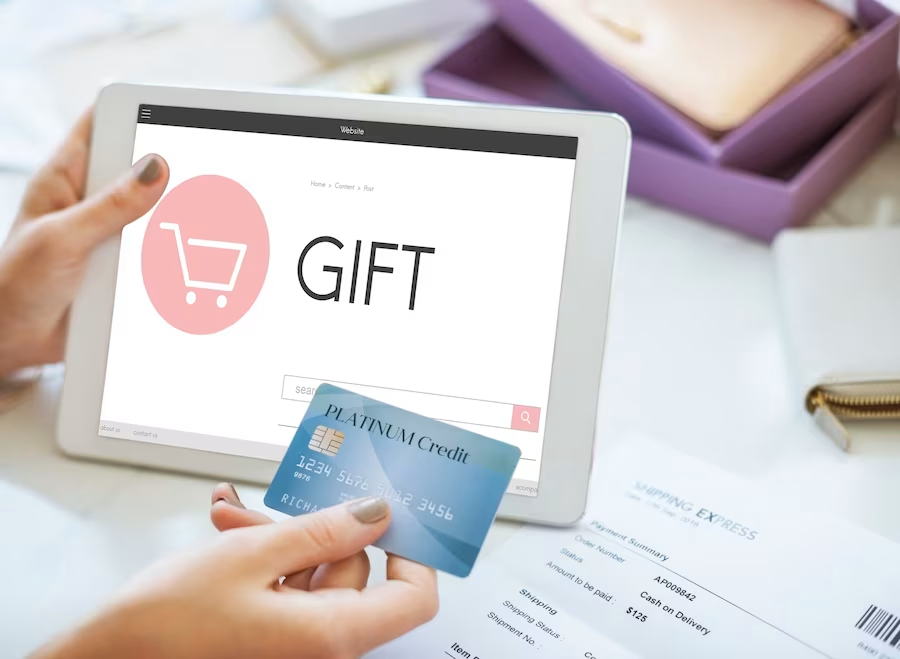
Examples:
- Starbucks Rewards gives customers stars for every purchase. Those stars can be redeemed for free drinks or food.
- Sephora’s Beauty Insider Program offers a tiered rewards system. The more you spend, the better the perks—like birthday gifts, free samples, and exclusive event access
How does a B2C Loyalty Program differ from B2B?
Both B2C and B2B loyalty programs aim to retain customers and boost engagement, but they differ in execution due to their audiences.
1. Target Audience
- B2C Loyalty Programs focus on individual consumers buying for personal use. This audience is broader, with varying needs and motivations.
- B2B Loyalty Programs, however, target businesses or organizations where decisions are made by individuals purchasing on behalf of their company.
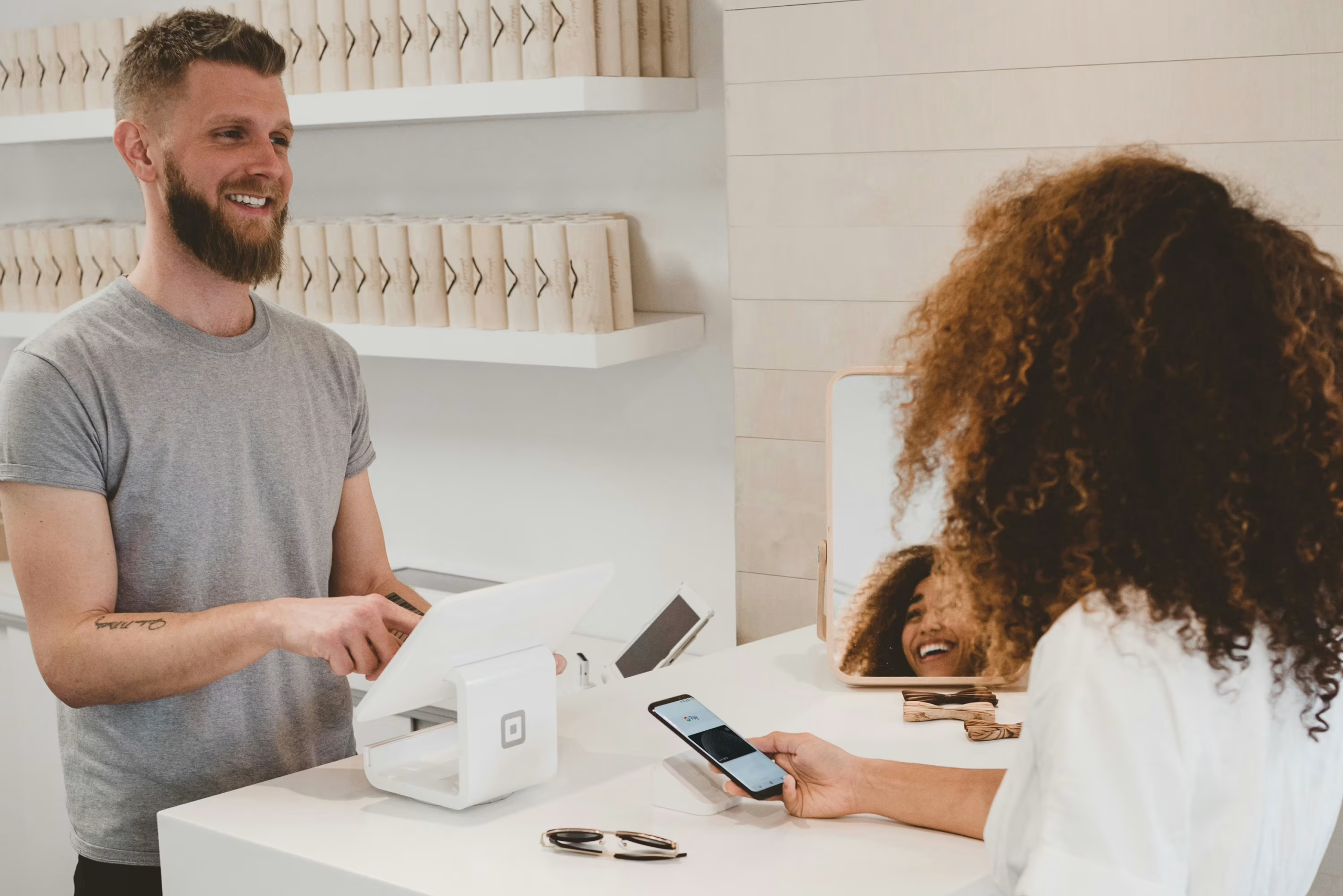
2. Decision-Making Process
- In B2C, decisions are usually fast and emotional, made by one person. That’s why impulse buys are so common—they’re driven by how someone feels in the moment.
- In B2B, it’s different. Decisions involve multiple people and take longer. They’re based on logic and business needs, not instant gratification.
3. Rewards and Personalization
- B2C rewards are all about quick wins—discounts, free products, or points. These work because they give immediate value and keep consumers coming back.
- In B2B, rewards focus on building relationships. Things like exclusive training, dedicated support, or early access to new features show long-term value. It’s less about quick perks and more about creating trust and loyalty.
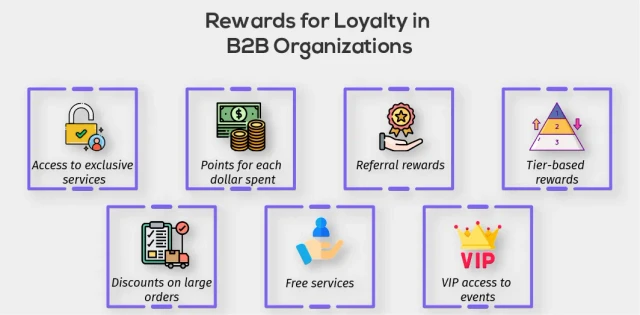
4. Frequency and Scale
- In B2C, transactions are frequent and often smaller in value. Programs need to handle a large number of members and interactions.
- In B2B, interactions happen less often but usually involve bigger-order values and more complex relationships. It’s about quality over quantity.
5. Customer Relationship
- B2C relationships tend to be more transactional and less personal, which makes creating a strong emotional bond tougher.
- In B2B, it’s different. Relationships are built on trust, long-term partnerships, and personalized service. It’s all about creating a mutually beneficial connection that lasts.
5 Benefits of setting up a B2C Loyalty Program
It’s important to understand the potential advantages before investing in such a loyalty program program. Below are some of the most significant benefits of implementing a B2C loyalty program, which should give you a clearer picture of what you can achieve.

4 Main Types of B2C Loyalty Programs
Let me walk you through the main types of B2C loyalty programs so you can see which ones align with your goals and your customers’ preferences.

#1. Points-Based Programs
Points-based programs are one of the most widely used loyalty systems across various industries. Customers earn points for every purchase or specific action they take (like referrals or signing up for a newsletter).
These points can later be redeemed for rewards such as discounts, free products, exclusive experiences, or even cashback. This structure is flexible and adaptable, making it suitable for businesses of all sizes.
Example: Grocery stores like Kroger or Tesco use these programs to keep customers coming back by offering points that save them money.

#2. Punch Cards
Punch cards are one of the simplest and most straightforward B2C loyalty programs for now. With this type, customers receive a card (physical or digital) that tracks their purchases with stamps or punches. After completing a set number of purchases, they’re rewarded with a free item, a discount, or another incentive.
The simplicity of this system makes it easy to implement and ideal for small businesses with frequent, low-cost transactions.
Example: Your local coffee shop probably uses this. “Buy 9 cups, get the 10th free” is a common way to reward regulars.
#3. Tiered Rewards
Tiered rewards programs incentivize customers to spend more by offering increasingly valuable perks as their spending increases. Customers are grouped into tiers based on their cumulative spending or activity levels, with each tier unlocking better benefits.
This structure motivates customers to increase their spending to reach the next reward level.
Example: Airlines like Delta use tiered rewards to offer benefits like free upgrades, priority boarding, or lounge access to frequent flyers.

#4. VIP Memberships
The B2C loyalty program – VIP memberships – requires customers to pay a fee to join a loyalty program that offers exclusive perks and benefits. These programs work best for businesses with highly engaged and loyal customers who are willing to pay for added value.
VIP memberships focus on exclusivity and make members feel like they’re part of something special.
Example: Amazon Prime is a great example. For a small fee, members get free shipping, access to movies and TV shows, and exclusive deals.
So, which one should you choose?
The right B2C loyalty program depends on your business and your customers. If you want something simple, go for punch cards. If you’re after high-value customers, tiered rewards or VIP memberships might be a better fit.
More to explore: Types of Loyalty Programs To Keep Customers Coming Back
7 Steps on How to Build a B2C Loyalty Program
Starting a B2C loyalty program can be a bit overwhelming if you don’t know where to start. To help you solve this, here is a clear, detailed step-by-step guide on how to build a B2C loyalty program from the ground up, which should make the process much easier to follow.
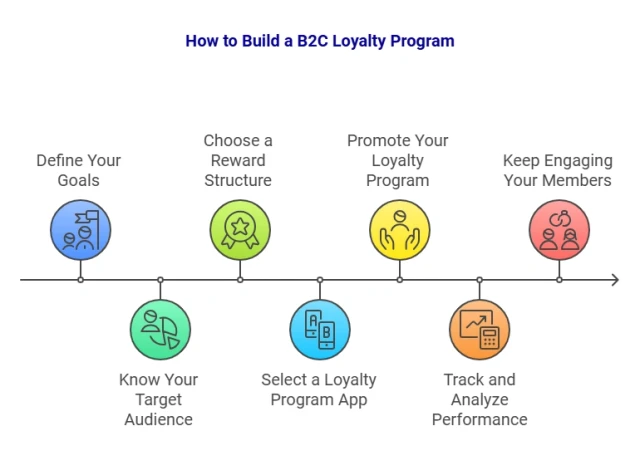
Step 1: Define Your Goals
First, you need to start setting clear goals for your loyalty program. Are you aiming to increase customer retention, boost average order value, or encourage repeat purchases? Having well-defined objectives will guide every decision, from the reward structure to the communication strategy.
For example, if retention is your goal, focus on rewards that encourage long-term engagement.
Step 2: Know Your Target Audience
Understanding your customers is essential for designing an effective loyalty program. Analyze their preferences, spending habits, and what motivates them. Do they value discounts, exclusive access, or points they can redeem for products?
For instance, millennials may prefer experiential rewards, while older customers might lean towards tangible benefits.
Step 3: Choose a Reward Structure
Selecting the right reward structure is crucial. Points-based systems are versatile and easy to implement, allowing customers to earn points for purchases and redeem them for rewards. Tiered programs work well for encouraging higher spending, while VIP memberships offer exclusive perks for a fee.
Moreover, you should choose a structure that fits your customers’ habits and aligns with your business model.
Step 4: Select a Loyalty Program app
The platform you choose will determine how smoothly your loyalty program operates. Small businesses can use affordable options like Smile.io or LoyaltyLion, while larger companies may invest in custom-built platforms.
Personally, I think the Joy Rewards & Loyalty Program (a loyalty app from Avada Commerce) could be a good option for businesses of various sizes because it offers a flexible platform with customizable features. From what I’ve seen, it seems to provide a balance of essential loyalty program tools without excessive complexity, making it potentially suitable for both smaller businesses starting out and larger ones looking for scalable solutions.

Step 5: Promote Your Loyalty Program
Even the best loyalty program won’t succeed if customers don’t know about it. Promote your program through multiple channels – on your website, social media, email campaigns, and even in-store signage.
You should highlight the benefits clearly, such as “Earn points for every purchase” or “Get exclusive member discounts.” Additionally, train your staff to mention the program during checkout to encourage sign-ups.
Step 6: Track and Analyze Performance
Use analytics tools to monitor metrics like enrollment rates, repeat purchases, and customer retention. For instance, if sign-ups are high but participation is low, consider whether your rewards are compelling enough.
Also, regularly reviewing these insights allows you to identify strengths and weaknesses in your program. Use the data to refine and improve, ensuring it continues to deliver value to your customers and aligns with your business goals.
Step 7: Keep Engaging Your Members
Customer engagement doesn’t end with sign-up – it’s an ongoing effort. Regularly update your loyalty program with limited-time offers, personalized promotions, and exclusive deals. For example, offering double points during special events or sending tailored offers based on past purchases can keep members interested.
Frequent communication, like email updates or app notifications, helps maintain excitement and participation.
3 Examples of successful B2C Loyalty Programs
Let’s take a look at some real-life examples that show how companies have nailed it with their B2C loyalty programs.
1. Allbirds Korea
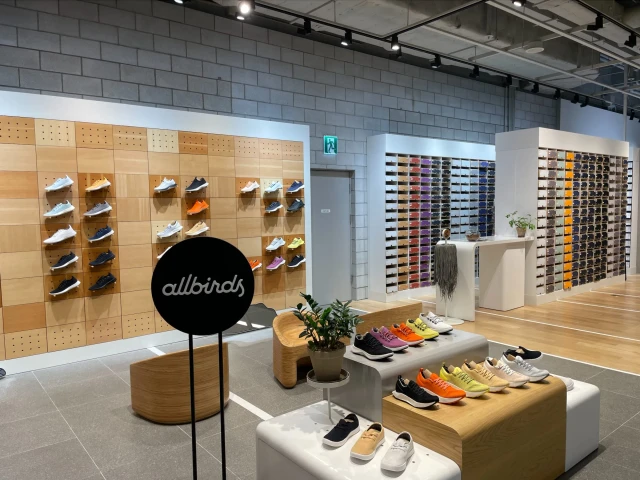
Allbirds Korea collaborated with Joy.so launch its first-ever loyalty program. To ensure immediate engagement, they pre-allocated loyalty points to customers based on their past purchases. This move rewarded existing customers and incentivized them to explore the new program.
Additionally, Allbirds introduced tiered birthday rewards, giving higher-value perks to more loyal customers, and ran double-reward campaigns to boost excitement and participation.
Statistics
- 1700% Return on Investment
- 50% Point redemption rate in the last 30 days
- Over 300 Product reviews in the last 30 days
- Issued 150 Million Won in loyalty points to encourage customers to join the program
How did this B2C Loyalty Program succeed?
- Focus on Sustainability & Community:
Allbirds has a strong brand identity centered around sustainability, and they’ve built a loyal following by emphasizing this in their marketing and loyalty initiatives. I think this resonates particularly well with the Korean market, where environmental consciousness is growing. They often partner with environmental organizations and promote eco-friendly practices, strengthening the bond with their target audience.
- Emphasis on Experiential Rewards:
While specific details of their Korean loyalty program are limited publicly, Allbirds generally focuses on experiential rewards, like exclusive events or early access to new products. In my opinion, this type of reward creates a stronger emotional connection than simple discounts, which is crucial for building long-term loyalty. This can be seen in their global initiatives, which suggest a similar approach in Korea.
- Strong Online Presence and Engagement:
Allbirds excels at online marketing and engagement. They use social media effectively to connect with customers and build a community. I think this is especially important in Korea, where social media usage is very high. They likely leverage these channels to promote their loyalty program and keep members engaged.
2. Vinamilk
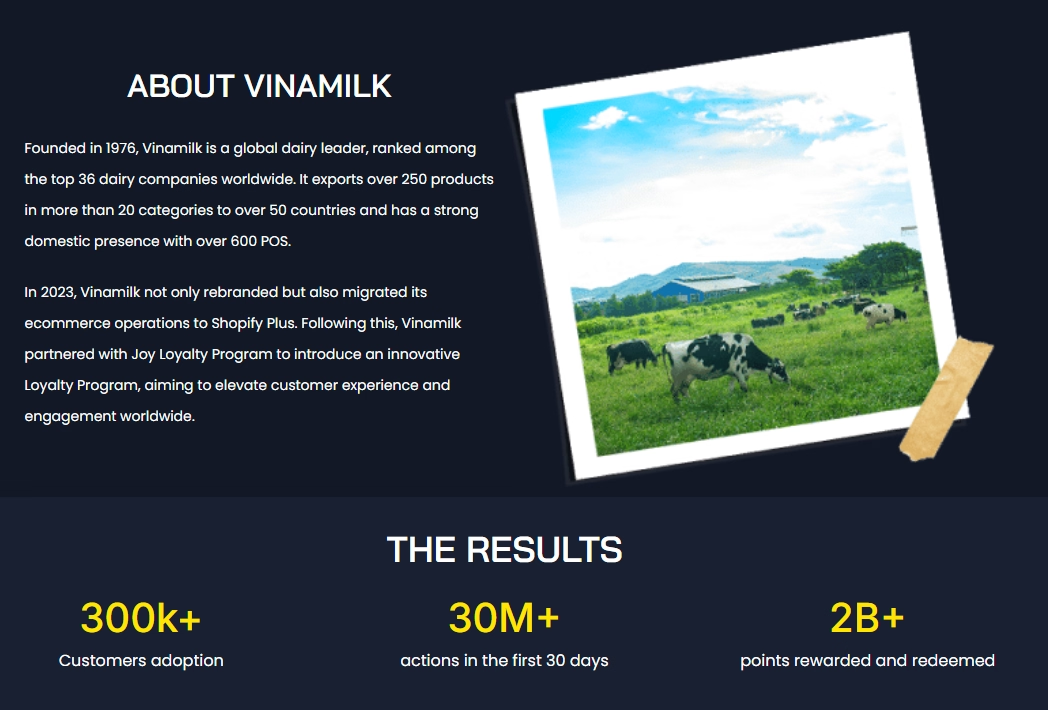
Vinamilk, the leading Vietnamese dairy brand, leveraged the Joy Rewards & Loyalty Program app to create a loyalty program that seamlessly integrated with their POS systems. This integration allowed customers to earn and redeem points effortlessly across multiple retail outlets, bridging the gap between offline and online experiences.
Statistics
- 450% Return on Investment
- 50% Point redemption rate in the last 30 days
- Over 30 Million Loyalty engagements in the last 30 days
- The loyalty program reached 20 million consumers
How did this B2C Loyalty Program succeed?
- Family-Oriented Approach:
Vinamilk is a dominant player in the Vietnamese dairy market, and their loyalty programs often target families with young children. I think this is a smart strategy, as it taps into a key demographic for their products. Their programs often include things like birthday gifts for children and educational content for parents.
- Points-Based System with Practical Rewards:
Vinamilk uses a points-based system where customers earn points for purchases that can be redeemed for practical rewards like household items or discounts on future purchases. I believe this type of reward is very effective in Vietnam, where consumers often prioritize value and practicality. This aligns well with their mass-market appeal.
- Wide Distribution Network and Accessibility:
Vinamilk has a very wide distribution network across Vietnam, making their products and loyalty program easily accessible to a large portion of the population. In my view, this accessibility is a major factor in their success. This widespread availability ensures that a large number of customers can participate and benefit from their loyalty programs.
3. Levents

Levents, a growing fashion brand, revamped its loyalty strategy using Joy.so and transitioned to Shopify Plus for enhanced digital capabilities. This update allowed the brand to unify its loyalty program across both online and in-store channels, ensuring a consistent customer experience.
Statistics
- 2B+ points rewarded and redeemed
- 30 million+ actions in the first 30 days
- 300,000+ customer adoptions
How did this B2C Loyalty Program succeed?
- Focus on Gen Z and Young Adults:
Levents targets a younger demographic, and their loyalty programs reflect this. They often incorporate elements of gamification and social media integration, which I think are very effective for engaging this audience. Their approach is very trendy and in tune with the current market.
- Community Building Through Exclusive Content and Events:
Levents likely focuses on building a strong online community by offering exclusive content, early access to new drops, and potentially even events for loyalty members. I think this strategy can be very effective for creating a sense of belonging and driving brand loyalty among young consumers. This creates a feeling of exclusivity.
- Collaborations and Limited Edition Drops:
Levents frequently collaborates with artists and other brands on limited-edition drops, which creates excitement and drives demand. I think this strategy ties in well with their loyalty program, as members could get early access to these coveted items. This creates a sense of urgency and encourages immediate action.
Conclusion
We’ve covered everything from why B2C loyalty programs matter to the different types and examples you can draw inspiration from, helping you understand their potential to drive customer retention and growth. To make the most of your loyalty program, focus on creating one that feels personal, rewarding, and worth engaging with for your customers.
FAQs
What is B2B vs. B2C loyalty?
B2B loyalty focuses on building long-term relationships with business clients through personalized rewards and services. B2C loyalty targets individual consumers, often using points, discounts, or exclusive perks to encourage repeat purchases.
Why is B2C better than B2B?
B2C is often seen as more scalable due to its larger customer base and simpler decision-making process. However, whether B2C or B2B is “better” depends on the business model and goals.
What are B2C relationships?
B2C relationships are direct interactions between a business and its individual consumers. These relationships are often transaction-focused but can evolve into brand loyalty through effective engagement strategies.
What is the B2C rule?
The B2C rule refers to prioritizing customer convenience, personalization, and quick decision-making to meet the needs of individual consumers in a competitive market.
What are examples of B2C companies?
Examples of B2C companies include Amazon, Starbucks, Nike, Netflix, and Walmart – businesses that sell directly to individual consumers.
-4aaabb.webp?width=3840&q=75&f=webp&auto=format)

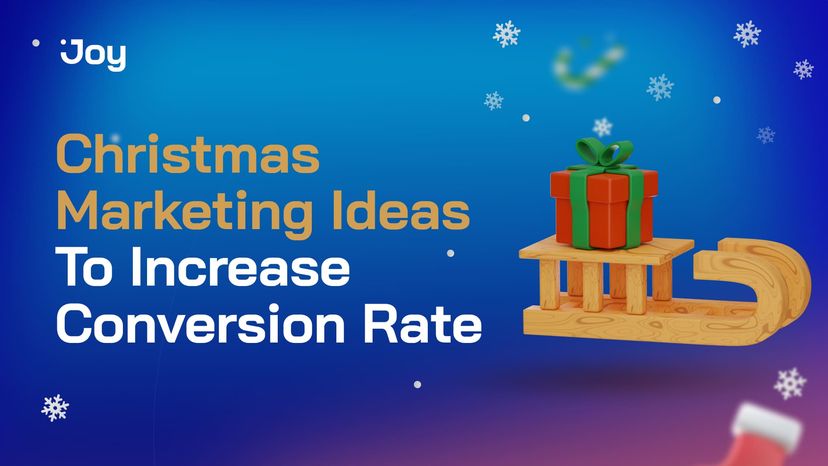

-a7e9a3.png?width=828&q=75&f=webp&auto=format)